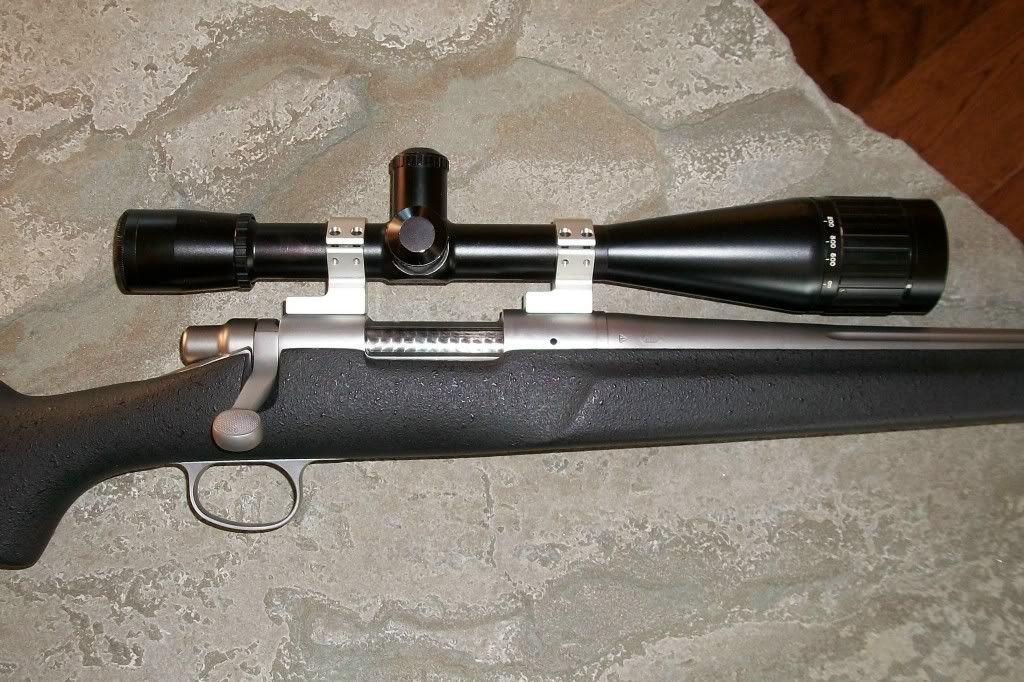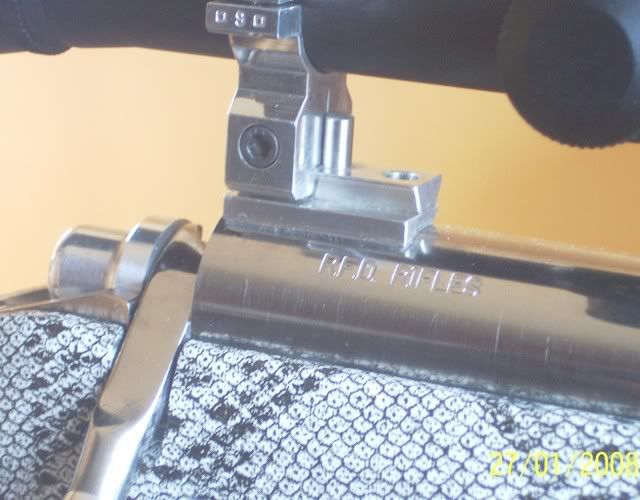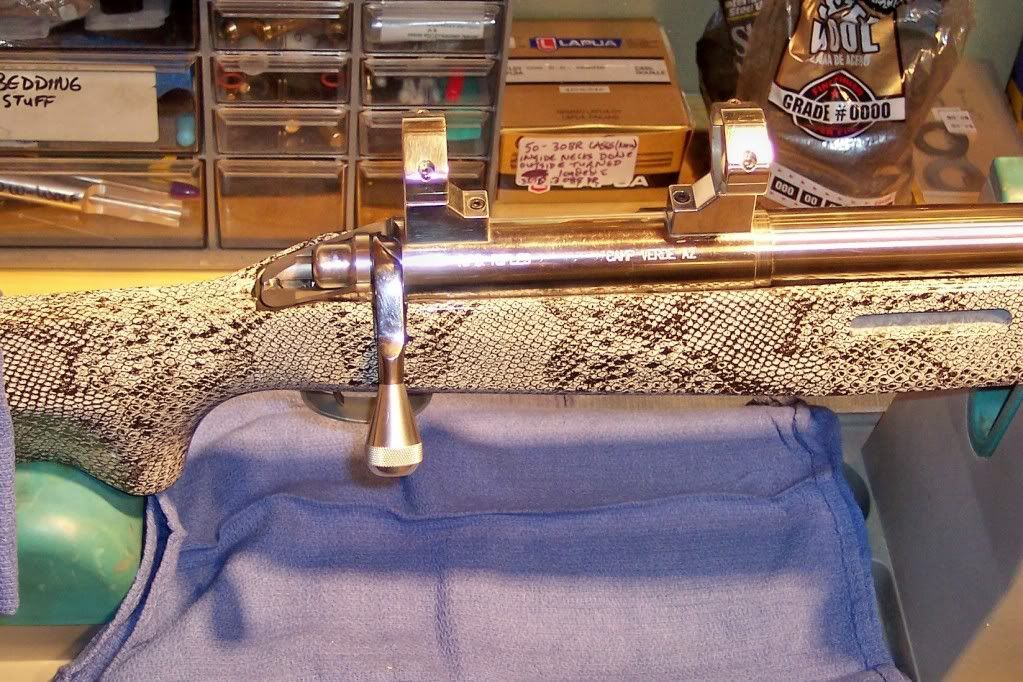Ditto the Talley's. They have a 'pinch point' where the ring halves meet and that needs to be lapped out so the scope fits squarely in the rings with maximum contact. Removing the 'pinch point' also ensures the scope tube isn't damaged.
On a production reciever like the 700's, there can be a big difference in ring height due to the recievers not be exactly perfect. Bedding the bases to the reciever gets the base heights equal, gives 100% contact between the base and reciever and lays the foundation for a good set of rings. A good example is my .17 Rem, pictured here. There was .016-.018 difference in the ring heights from front to rear. Bedding the bases equalized the heights. The rings were lapped, then bedded.
The Davidson/Kelbly type dovetail setup offers a lot of flexibility, also. Personally, I think the dovetail setup is right on the edge of holding these scopes w/o moving. I JB Weld the rings to the rail on my Panda and Kodiak actions to make sure this doesn't happen. On my RFD, I made a recoil 'lug'...and JB Welded the rings...just to be sure.
Most 1" scope tubes measure between .998 and 1.002. A piece of lightweight tubing that measures 1.00" o.d. as the 'scope' when bedding the rings works well. AccraGlas Gel is a nice ring bedding compound. The Nylon in it gives it just enough flex to conform to the scope tubes.
Lapped and bedded Kelbly rings. Probably a dozen scopes in these rings over the years:
Once the rigs are bedded, they become 'universal' to any scope you may want to slap in 'em...with zero chance of stress or damage.
And people also win doing
none of this.......








